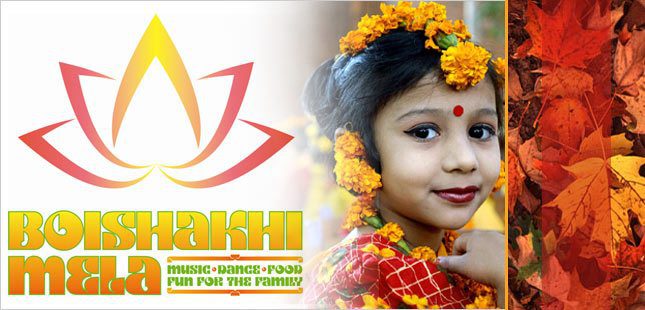
Pohela Boishakh is the Bengali New Year and it is observed in both Bangladesh and the West Bengal state of India. On 14th April 2012, year 1419 of the Hindu Calendar will be celebrated.
A wide range of Bengali dishes are made for this special occasion. Panta bhat (rice-based dish) is one of the most popular ones along with Panta Ilish (rice soaked in water), Chot Pati (made of lentils and green chilies) and Elish bhaja (fried hilsa fish).
Pati sapta (Desi crepe) is eaten for dessert on this day and Bhapa Pitha (made with rice, coconut and molasses) is a classic Bengali breakfast that people have for the New Year. Traditionally, on this day, food is served in dishes made of clay and people sit together on the floor to eat. It is also a day when food donations are given to the poor.
With the UK’s large Bangladeshi community, the Bengali New Year celebrations are a huge event. In London, the annual “Boishakhi Mela” event will take place on 20th May 2012 as the weather is milder and sunnier in May than in April – in theory at least.


Share this Story

I am not a bengali by a caste but born and brought up in bengal and enjoyed the bengali new year every year with the bengali friends and loved one.
Enjoyed the Bengali new year.
Pahela Baisakh 1419 is not ased on the Hindu calender.
Pahela Baishakh is the largest and the most popular annual festival in Bangladesh, held in the middle of April. It marks the beginning of the Bengali New Year and celebrated all over the country with colours and traditional food. In Dhaka City, the centre of the festival is Ramna Park and the Dhaka University area. From early morning people from all walks of life and wearing traditional clothing start to converge into the area from all directions. It is a happy and fun loving occasion. During the course of the day people are seen singing, eating traditional food, face painting, dancing, etc.
Historically, the Bengali calendar was established by the Moghul Emperor Akbar in 1584 AD on the solar cycle and made the same as the Islamic year 963 AH. The first of Muharam in 963 AH, Islamic calendar, was made the first day of the month of Baishakh 963. But from then on the two calendars have diverted as the Islamic calendar is based on the lunar year while the Bengali year follows the solar cycle. On average, the lunar year is ten days shorter.